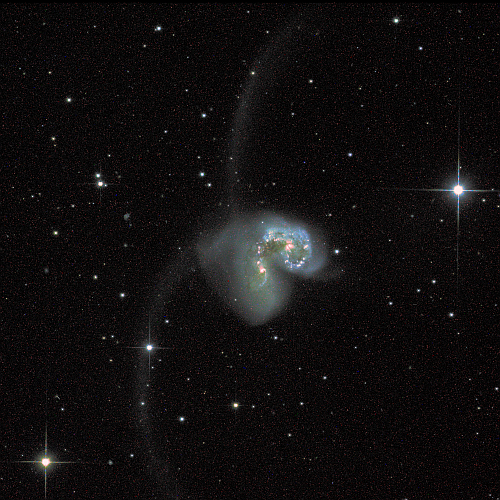Webb detects large water plume released from Saturn’s moon Enceladus
Using the infrared cameras on the Webb Space Telescope, astronomers have detected a surprisingly long and large plume of water vapor erupting from the tiger stripe fractures on Saturn’s moon Enceladus that scientists for years have detected vapor plumes.
The false color image to the right shows that plume.
A water vapor plume from Saturn’s moon Enceladus spanning more than 6,000 miles – nearly the distance from Los Angeles, California to Buenos Aires, Argentina – has been detected by researchers using NASA’s James Webb Space Telescope. Not only is this the first time such a water emission has been seen over such an expansive distance, but Webb is also giving scientists a direct look, for the first time, at how this emission feeds the water supply for the entire system of Saturn and its rings.
…The length of the plume was not the only characteristic that intrigued researchers. The rate at which the water vapor is gushing out, about 79 gallons per second, is also particularly impressive. At this rate, you could fill an Olympic-sized swimming pool in just a couple of hours. In comparison, doing so with a garden hose on Earth would take more than 2 weeks.
Though that rate of release sounds large, we must remember it is being released from a moon 313 miles across. From that perspective the rate of flow is quite reasonable.
Using the infrared cameras on the Webb Space Telescope, astronomers have detected a surprisingly long and large plume of water vapor erupting from the tiger stripe fractures on Saturn’s moon Enceladus that scientists for years have detected vapor plumes.
The false color image to the right shows that plume.
A water vapor plume from Saturn’s moon Enceladus spanning more than 6,000 miles – nearly the distance from Los Angeles, California to Buenos Aires, Argentina – has been detected by researchers using NASA’s James Webb Space Telescope. Not only is this the first time such a water emission has been seen over such an expansive distance, but Webb is also giving scientists a direct look, for the first time, at how this emission feeds the water supply for the entire system of Saturn and its rings.
…The length of the plume was not the only characteristic that intrigued researchers. The rate at which the water vapor is gushing out, about 79 gallons per second, is also particularly impressive. At this rate, you could fill an Olympic-sized swimming pool in just a couple of hours. In comparison, doing so with a garden hose on Earth would take more than 2 weeks.
Though that rate of release sounds large, we must remember it is being released from a moon 313 miles across. From that perspective the rate of flow is quite reasonable.









